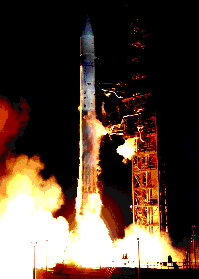Pioneer 10 & 11
Full Name: Pioneer 10 & 11
Phase: Past
Launch Date: March 03, 1972
Mission Project Home Page: http://web.archive.org/web/20060206090452/spaceprojects.arc.nasa.gov/Space_Projects/pioneer/PNhome.html
Launched on 2 March 1972, Pioneer 10 was the first spacecraft to travel through the Asteroid belt, and the first spacecraft to make direct observations and obtain closeup images of Jupiter. The most remote object ever made by man, Pioneer 10 is over 6.3 billion miles away, and made valuable scientific investigations in the outer regions of our solar system until the end of its mission on 31 March 1997. Pioneer 10 is headed towards the constellation of Taurus (The Bull). It will take Pioneer over 2 million years to pass by one of the stars in the constellation.
Pioneer 11 was the second mission to investigate Jupiter and the outer solar system and the first to explore the planet Saturn and its main rings. Pioneer 11, like Pioneer 10, used Jupiter's gravitational field to alter its trajectory radically. It passed close to Saturn and then it followed an escape trajectory from the solar system. Launched on 5 April 1973, Pioneer 11 followed its sister ship to Jupiter (1974), made the first direct observations of Saturn (1979), and studied energetic particles in the outer heliosphere. The Pioneer 11 Mission ended in September 1995, when the last transmission from the spacecraft was received. Its electrical power source exhausted, the spacecraft could no longer operate any of its scientific instruments, nor point its antenna toward Earth. The spacecraft is headed toward the constellation of Aquila (the Eagle), northwest of the constellation of Sagittarius. Pioneer 11 may pass near one of the stars in the constellation in about 4 million years.

